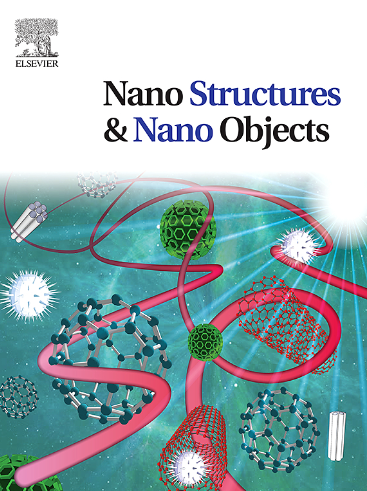Confined selenium chains in one-dimensional mordenite nanochannels: A TEM and Raman spectroscopy study
IF 5.45
Q1 Physics and Astronomy
引用次数: 0
Abstract
This study investigates the incorporation of selenium chains into the nanochannels of hydrated mordenite (MOR) using high-resolution TEM imaging, Raman spectroscopy, and computational simulations. The results reveal that selenium chains are successfully incorporated within the mordenite framework, with changes in image contrast confirming its presence. Raman spectroscopy was employed to identify the selenium species in Se-MOR, revealing characteristic vibrational modes associated with trigonal selenium structures. Raman spectrum for Se-MOR displayed peaks at 250 cm–1, attributed to symmetric bond-stretching, and at 265 cm–1, linked to antisymmetric bond-stretching, confirming the presence of selenium chains within the nanochannels of the mordenite structure. Crystallographic modeling and TEM analysis show that these selenium chains are integrated into specific nanochannels, influencing the Se-MOR growth directions. TEM imaging and SimulaTEM simulations at 300 and 400 keV in bright field mode show no changes in pure mordenite but reveal darker regions in Se-MOR corresponding to selenium chains. STEM_CELL simulations in dark field mode confirm increased intensity in selenium-rich regions, consistent with conventional TEM mode observation. Comparisons between simulated and experimental Raman spectrum show good agreement, suggesting that selenium chains primarily occupy small nanochannels in hydrated mordenite, while larger nanochannels in dehydrated mordenite may accommodate a range of selenium species. Additionally, the study explores the impact of water molecules on selenium incorporation, showing that only selenium chains are formed in the small channels in the presence of water.
求助全文
约1分钟内获得全文
求助全文
来源期刊

Nano-Structures & Nano-Objects
Physics and Astronomy-Condensed Matter Physics
CiteScore
9.20
自引率
0.00%
发文量
60
审稿时长
22 days
期刊介绍:
Nano-Structures & Nano-Objects is a new journal devoted to all aspects of the synthesis and the properties of this new flourishing domain. The journal is devoted to novel architectures at the nano-level with an emphasis on new synthesis and characterization methods. The journal is focused on the objects rather than on their applications. However, the research for new applications of original nano-structures & nano-objects in various fields such as nano-electronics, energy conversion, catalysis, drug delivery and nano-medicine is also welcome. The scope of Nano-Structures & Nano-Objects involves: -Metal and alloy nanoparticles with complex nanostructures such as shape control, core-shell and dumbells -Oxide nanoparticles and nanostructures, with complex oxide/metal, oxide/surface and oxide /organic interfaces -Inorganic semi-conducting nanoparticles (quantum dots) with an emphasis on new phases, structures, shapes and complexity -Nanostructures involving molecular inorganic species such as nanoparticles of coordination compounds, molecular magnets, spin transition nanoparticles etc. or organic nano-objects, in particular for molecular electronics -Nanostructured materials such as nano-MOFs and nano-zeolites -Hetero-junctions between molecules and nano-objects, between different nano-objects & nanostructures or between nano-objects & nanostructures and surfaces -Methods of characterization specific of the nano size or adapted for the nano size such as X-ray and neutron scattering, light scattering, NMR, Raman, Plasmonics, near field microscopies, various TEM and SEM techniques, magnetic studies, etc .
 求助内容:
求助内容: 应助结果提醒方式:
应助结果提醒方式:


